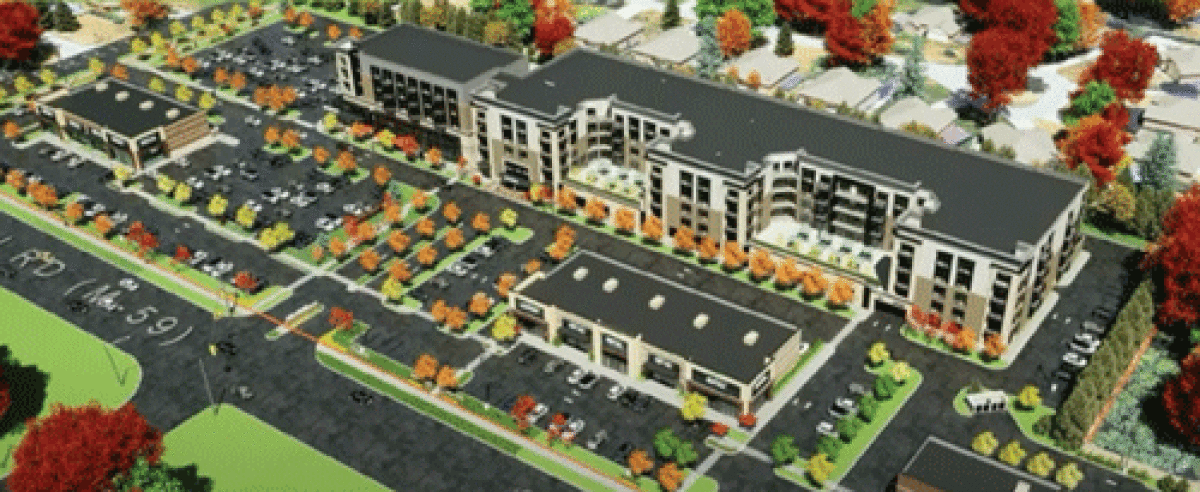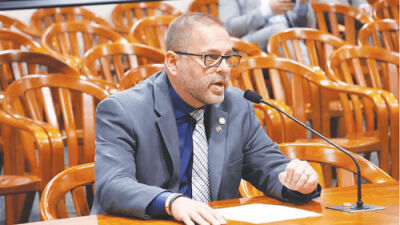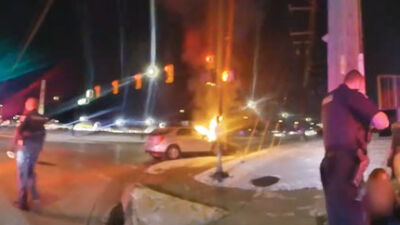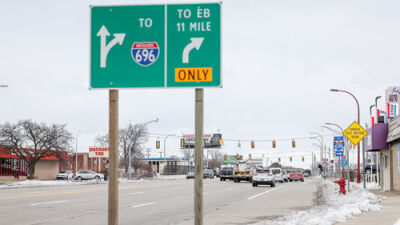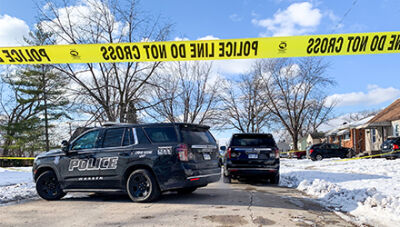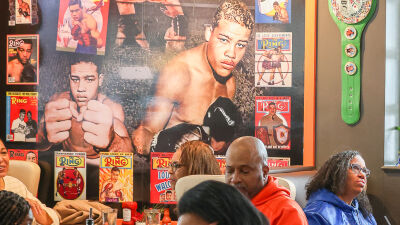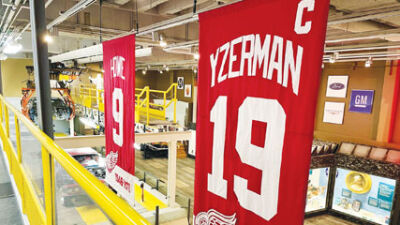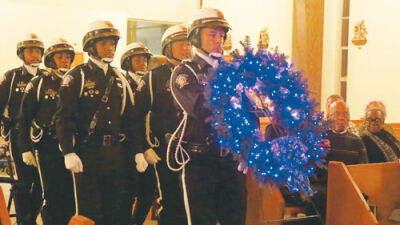STERLING HEIGHTS — The developer behind a proposed mixed-use development along Hall Road recently withdrew the application after many residents objected to the idea weeks prior.
The planned unit development proposal for The Wedge of Sterling Heights would have affected about 10 acres of vacant property on Hall Road’s south side, west of Sterritt Street.
The proposal was for a five-story building containing 158 units of residential space, as well as a specialty grocery market. Three separate retail buildings would have each had a drive-thru, and two of those would have been built for multiple tenants.
According to city officials, the planned unit development option’s purpose is to streamline issues such as zoning, possible variances and more. This grants flexibility toward spurring innovation and land use efficiency while also keeping in mind the Master Land Use Plan, officials added.
During a July 5 Sterling Heights City Council meeting, City Planner Chris McLeod said the city’s Planning Commission voted 6-1, with two absences, Feb. 9 to recommend the proposal.
In a city document, the city said The Wedge could have set “an important precedent for future key mixed use developments in the North Van Dyke corridor and Lakeside Mall redevelopment.” The document called the proposal a high-quality development, though it also mentioned concerns over its size and its proximity to single-story homes.
“The city is moving in this direction and desiring to have mixed-use developments within the city,” McLeod said during the meeting. “The overall development plans do provide for an attractive development in terms of architecture and the various amenities being proposed.”
During the July 5 meeting, Andrew Nadhir presented the proposal on behalf of BOSC Realty Advisors LLC. He said the development could have contained, besides the grocery store, a coffee shop, familiar restaurants and neighborhood services such as a nail salon, an urgent care, a veterinary clinic or a barber shop.
A pocket park, a dog-walking area and an outdoor dining area could’ve been other parts of the plan, Nadhir said.
“Our primary goal for this project is to create a beautiful mixed-use property that serves as an amenity for the neighboring communities and provides modern high-end housing options for young and career professionals and empty nesters,” he said.
Nadhir said the developer respects the neighbors and listened to their feedback. He said the altered plan increased the setback between the apartments and nearby homes to the south; increased landscaping, trees and green space; decreased parking; and more. The site would also have security and surveillance cameras, he said.
Nadhir added that the project could produce long-term jobs and boost the city’s tax base.
“This property will inevitably be developed,” he said. “But unlike previously approved retail and hotel projects, which bring a transient crowd, we are looking to bring and retain new neighbors into the city.”
Over two dozen residents spoke during public comment, and most panned the Wedge proposal, airing concerns over building height, green space, noise, light pollution and traffic, among other things.
Brandy Wright, who sits on the Planning Commission, differed somewhat and said she generally likes mixed-use developments. But she said she preferred condos over apartments, and added that she’d like to see the buildings moved northward, closer to the street.
“I just think, like I said, some changes could be made, and they could work with the residents a little more to make it not as big of an impact on them,” she said.
The City Council didn’t take a vote on the proposal July 5, and Mayor Michael Taylor wanted to delay a potential vote until July 19 due to Councilman Michael Radtke’s absence. But the council struck the issue from its July 19 meeting agenda after receiving a letter from the developer.
Taylor said the letter basically said that it considered comments from public hearings at the Planning Commission and City Council levels, and as a result, the developer is withdrawing the application.
“We hope in the future to bring a project forward under a separate application that will be beneficial to the city as a whole as well as the surrounding neighborhood,” Taylor said, conveying the letter’s message.
Taylor then told the public that there is no longer a current development plan for that area.
“Of course, it can change in the future, and you will all be notified if and when that time comes,” he said.
Later, during public comment at the July 19 meeting, resident Joseph Znoy praised the end of the Wedge project in its current form, but he believes that it is emblematic of “bloated” planned unit development proposals that the Planning Commission and City Council have recently seen.
He also criticized the urge to “build and build and build until there isn’t anywhere else to build,” adding that this development strategy could wreck the area’s charm, alter city demographics until it changes the local political climate, and more.
“I find that a very terrifying vision that reveals a plan to totally urbanize Sterling Heights,” Znoy said.
Learn more about Sterling Heights by visiting www.sterling-heights.net or by calling (586) 446-2489.
 Publication select ▼
Publication select ▼